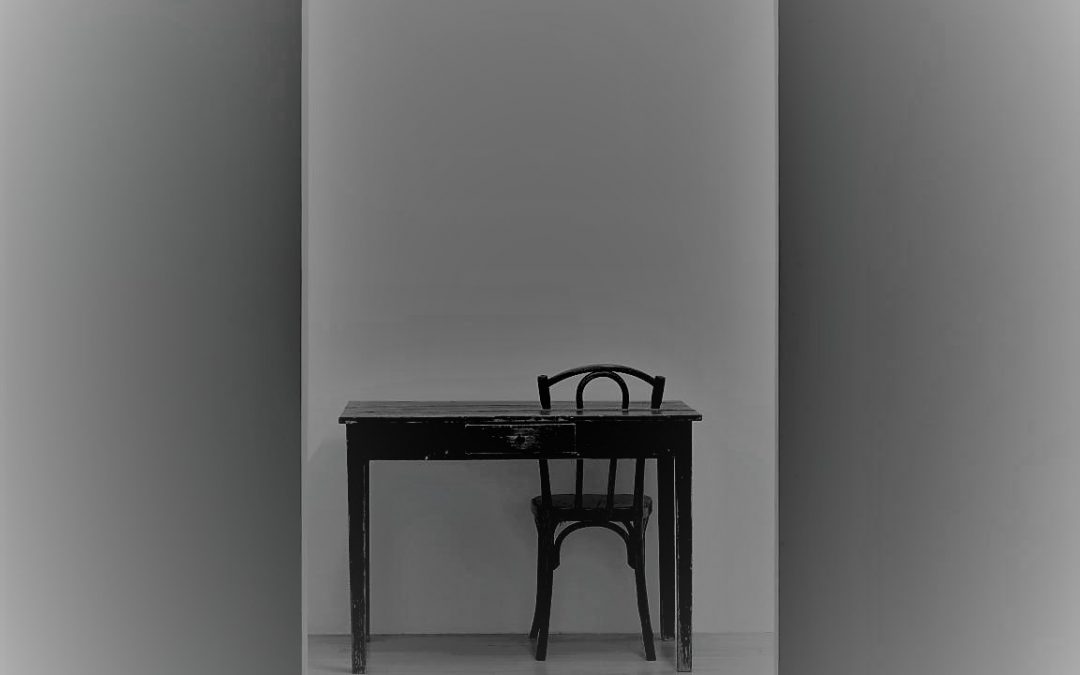














Mona Hatoum B:1952
Interior/Exterior Landscape – 2010
I came across this artist having been drawn to the stark interior imagery of the installation photographs. I have edited the gallery text to remove the peripheral text. To get to the bones of the objects, what is seen, felt, experienced, the material of the work.
Interior/Exterior Landscape 2010 is a room-sized installation. hair-embroidered pillow / a bag constructed from a cut-out print of a world map hanging from a metal coat rack / a birdcage housing a single hair ball. subtle references to Hatoum’s biography / a bare steel-framed bed without a mattress to lie down on / long strands of hair hanging to the floor below like cobwebs / a stool. In the corner of the room a chair next to the wall is conjoined with a small wooden desk / a small cage / a hairball – hair is symbolically rich and has strong connections with memory – the Victorian locket, for example, containing a curl of hair from a loved one being a well-known form of keepsake. Although slightly disturbing, the overall effect of the hairballs is not one of revulsion but rather an uncanny evocation that is both delicate and unsettling.
a deep understanding of the vernacular of a place and its culture, and a sensitivity to the nuanced connotations of diverse materials.
Curator Ralph Rugoff has argued that Hatoum’s room installations are critical in thinking about how to articulate personal space, like a bedroom, as an extension of identity and cultural belonging: ‘These sculptures imply a degree of alienation and uncertainty – a sense of not fitting in and feeling “at home” – is a crucial of our encounters with art, and integral to its capacity for displacing our readymade ways of relating to the world around us.’ (Ralph Rugoff, ‘Preface’, in The New Décor, exhibition catalogue, Hayward Gallery, London 2010, unpaginated.)
Yet the work is not in any way straightforwardly autobiographical; throughout her career Hatoum has persistently aimed to elicit emotional and physical responses in the viewer. Her perspective is, curator Frances Morris has noted, ‘grounded on being in-between, belonging in both places and in neither, engaged and yet detached, conditioned by loss and yet empowered by it to create something new’ (Frances Morris, Mona Hatoum, exhibition catalogue, Tate Modern, London 2016, p.7.) The impact of Hatoum’s work lies in this ability to balance the specific and the general, to draw on a particular cultural and political milieu and show how these connect with wider, universal concerns.
Further reading
Mona Hatoum: The Entire World as a Foreign Land, exhibition catalogue, Tate Modern, London 2000.
Mona Hatoum, exhibition catalogue, Hamburger Kunstalle 2004.
Christine Van Assche with Clarrie Wallis (eds.), Mona Hatoum, exhibition catalogue, Tate Modern, London 2016.
Michelle White (ed.), Mona Hatoum: Terra Infirma, exhibition catalogue, The Menil Collection, Houston 2018.
Clarrie Wallis
August 2018
https://www.tate.org.uk/art/artworks/hatoum-interior-exterior-landscape-t15265

Recent Comments